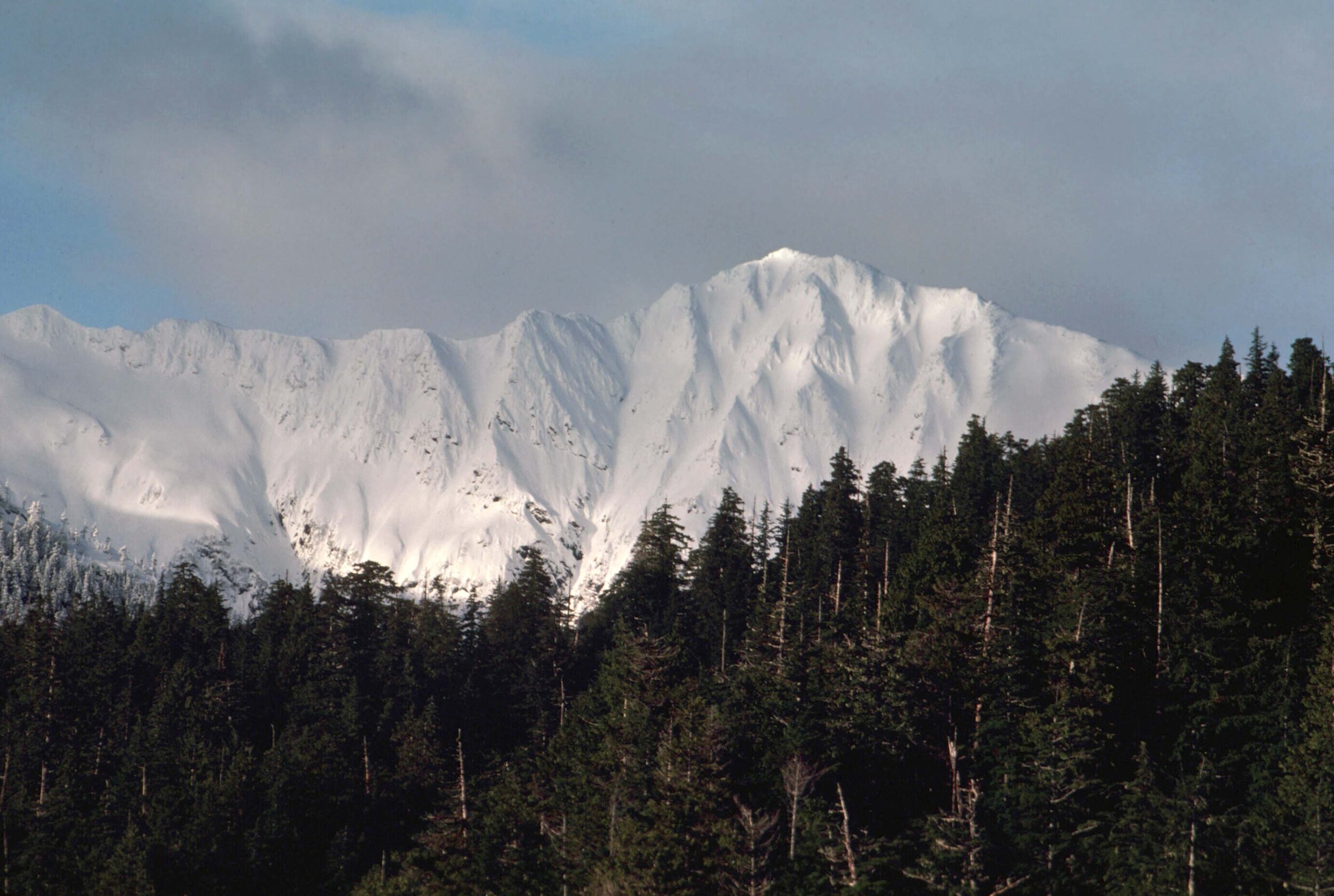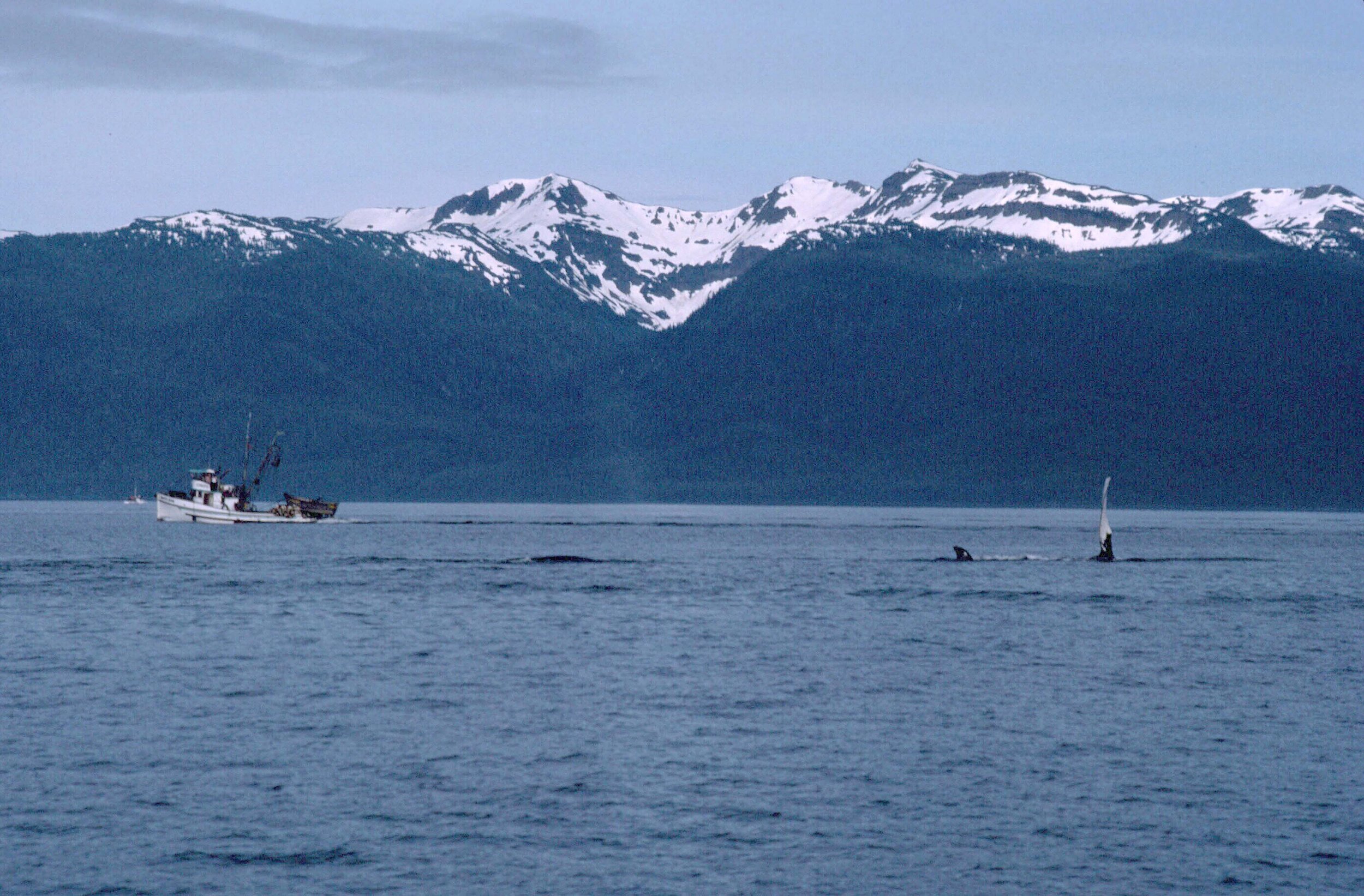
Southeast Alaska
“North–to Alaska, go north the rush is on.”
Songwriter John Denver penned the lyrics, “He was born in the summer of his twenty-seventh year, coming home to a place he’d never been before.” He wrote those words about his relationship with the Rocky Mountains. For me, his words perfectly describe how I felt when I moved to Sitka, Alaska in 1982. I was soon to turn 27, and about to start a summer job with the U.S. Forest Service as a fishery biologist mapping salmon habitat in streams throughout Southeast Alaska. I had dreamed of going to Alaska ever since I was a boy growing up in a small town in Pennsylvania. My boyhood friend, Tom, and I would watch every program on TV about Alaska. We went to the movies to watch documentaries about “The Last Frontier.” We read books about living off the land. We dreamed of days spent in a log cabin in the woods, and all our food would come from what we fished, hunted and trapped. Our only companions would be our dogs. Later, we expanded our invitation list to the Dallas Cowboys cheerleaders, but we were smart enough to realize they probably wouldn’t join us as their skimpy outfits would be insufficient during the cold Alaskan winters. Yeah, that’s why they wouldn’t join us.
My seven years in Alaska weren’t what Tom and I had envisioned when we were boys. I don’t think we even realized that a part of Alaska – Southeast – had a moderate coastal climate that wasn’t much different from where we grew up. If we’d known that at the time, our hypothetical invitation to the Dallas Cowboys cheerleaders to accompany us might have been taken more seriously.
The combination of big ocean, big mountains, big conifers, big bears, big whales, big fish, big crabs, big shrimp (Yeah, that’s a thing), big boats, big northern lights, and big outdoor adventures just felt right to me. It didn’t matter that I was only making a little money and that it rained so much, even ducks were heard to say, “Enough already.”What confirmed my initial impressions that I had found a place where I belonged was that I quickly found friends who had the same childhood dreams of one day moving to Alaska. That’s why in my novel, The Old Crocodile Man Theory, I had my main character, Kael Husker, call Alaska his home by choice.






In my novel, I describe the types of people who are drawn to the 49th state. I write, “Alaska was a haven for the loose screws, the square pegs, the left fielders, the odd ducks, the misfits. Kael theorized he fit into at least four of those categories.” I probably should have added to that list of nonconformists, boys who dream of living in a remote cabin with the Dallas Cowboys cheerleaders.
Alaska is full of characters who are a half-bubble shy of level. The thing is that Alaskans take pride in qualities that others might perceive as oddities. They are proud to be Americans, but they are prouder to be Alaskans. They embrace the pioneering spirit of those who crossed an ocean to find a new life, and when they finally reached land, they decided a road trip was in order. In Alaska, independence and ingenuity are celebrated. It’s okay to brag about something you scavenged and repurposed, especially if you made it better than the original.
Another quality appreciated by Alaskans is the ability to get an outside job done no matter what the weather conditions are. There is no such thing as bad weather; it’s bad clothing. The clothing doesn’t have to be stylish or fashionable. In fact, it’s better if it isn’t. It just needs to protect you from the elements, and Alaska can throw a lot of challenging elements at you. That’s why everyone in Southeast wears their Xtratuf rubber boots all the time. They are far from stylish, but they keep your feet bone dry in a climate that supports a temperate rain forest.
I had an Alaskan friend who had to travel down to Portland, Oregon for a conference. When he returned to Sitka, I asked him, “How was Portland.” His response was: “Everyone is beautiful in Portland. Women use makeup. Men comb their hair. Everyone wears nice clothes and nice shoes. Some men even wear these colorful pieces of cloth around their necks, and they hang down in front of their shirts.” I asked, “Were they ties?” His response was, “I guess.” He continued: “Instead of Helly Hansen rain gear, they use umbrellas. And I didn’t see one pair of Xtratufs the whole time I was there. Can you believe it?” I had to admit that it was hard to comprehend, so he showed me pictures to back up his outrageous findings.
Yes, Alaska is quirky. What’s funny is that quirkiness wasn’t one of the things I was looking for as a boy when I dreamed of moving there, but now that I am an adult and no longer live in Alaska, it is one of the things I miss most. That quality also makes it a perfect place from which a novel’s main character should originate. Coming from an unconventional and idiosyncratic place like Alaska prepared Kael for what he finds in an even more unorthodox setting – the Central African Republic.
I haven’t lived in Alaska for thirty years, but in many ways, I still consider myself an Alaskan. It was too good of both a dream and a reality to let go, which might explain why I want some of my ashes spread there. Some will probably go into my lake here in Minnesota where I already, and too soon, spread the ashes of my sister, my brother, and my dad. If I ever win the Nobel Prize for literature, maybe I’ll ask for a pinch to be spread in Sweden, too. A part of me spending eternity in Alaska just seems right. I think my younger self would agree.


